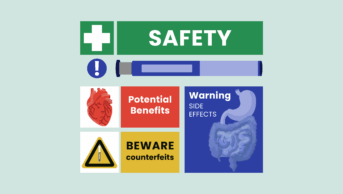
Shutterstock.com
Electronic prescribing and medication administration (ePMA) systems should include prompts to document a patient’s weight when supplying oral paracetamol, a report from the Healthcare Safety Investigation Branch (HSIB) has concluded.
The report, published on 24 February 2022, investigated the prescription of oral paracetamol in adult inpatients in England who, on admission to hospital, have low body weight at less than 50kg.
The HSIB investigation was prompted by the death of a patient aged 83 years with low body weight, who was admitted to hospital on 8 January 2020 after a fall.
During her stay, the patient was prescribed 1g of oral paracetamol four times per day but, ultimately, developed multiorgan failure owing to sepsis, as well as paracetamol-induced liver toxicity, with a coroner’s report later concluding that her “prescription of paracetamol was higher than it should have been, and this played a part in her death”.
The HSIB found that the patient’s weight had reduced to 39.7kg after 20 days in hospital and, although this was noted on her medication chart, “the investigation was unable to identify” who had weighed the patient.
A member of the pharmacy team had reviewed the patient’s medication chart on 31 January 2020, noted the low body weight “and asked for her dose of low-molecular-weight heparin (a medication to reduce the risk of blood clots forming) to be reduced” but did not request a change to the paracetamol dose, the report said.
Following the patient incident, the hospital trust told the HSIB that it had requested an inbuilt alert for the new ePMA system to “flag to the prescriber if a patient’s body weight is less than 50kg and they have been prescribed paracetamol more than 500mg four times a day”.
In response, the HSIB recommended in its report that this be considered more widely, saying that “it may be beneficial for ePMA systems to include an alert for oral paracetamol that prompts documentation of a patient’s weight and consideration of the risk of liver toxicity when their weight is less than 50kg”.
It further suggested that it may be “beneficial for the evidence on oral paracetamol and low body weight to be reviewed by the relevant national bodies to reach a consensus and agree standardised prescribing guidance”.
According to the report, prescribing guidance for oral paracetamol in patients with low body weight differs between the British National Formulary and National Institute for Health and Care Excellence clinical knowledge summaries.
In a statement issued alongside the report, the HSIB said their investigation “identified that whilst oral paracetamol toxicity is a known patient safety issue in the health service, it can be under recognised, and more evidence is needed to fully understand the relationship with low body weight”.
“There is also limited literature on the wider system factors that hinder safe prescribing of paracetamol to adults with low body weight, which could prompt learning and insight at a national level.”
Nina Barnett, consultant pharmacist in the care of older people at London North West Healthcare NHS Trust, said that “older people form a large percentage of hospitalised patients”.
“The importance of low body weight on paracetamol dose and frequency in older people may not be as well recognised by clinicians as other medications which require dose/frequency modification according to body weight.
“It would be helpful to raise awareness of this important issue, both with all clinicians and with the public who use paracetamol as an over-the-counter medicine, to reduce potential harm,” she said.
Emma Davies, advanced pharmacy practitioner in pain management at Cwm Taf Morgannwg University Health Board, said: “There is not a lot of literature on dose reducing oral paracetamol and I think many suppose the alleged low oral bioavailability makes it less risky.
“In fact, the bioavailability is greater than many assume and the risks of oral dosing are roughly the same, especially in people of greater susceptibility [such as those with] low weight and older, frail patients.
“Importantly, paracetamol is not even that effective for many of the conditions it is prescribed for long term … so there are numerous reasons to review it and reduce or stop using it where not indicated or the risks are too high.”
Alice Oborne, ePMA and medicines safety lead at Guy’s and St Thomas’ NHS Foundation Trust, said: “The risk uncertainty for oral paracetamol is illustrated by the conflicting national resources and merits further consideration, though gathering more risk information may prove difficult. The risk factors of low body weight and malnutrition may not be independent variables.
“A caution about restricting oral paracetamol is the possibility that patients don’t get an adequate (currently licensed) dose and their pain may not be controlled, leading to prescribing of opioids or non-steroidal anti-inflammatory drugs, which have their own drawbacks.”
Keely Galloway, national investigator at HSIB, said the report is “a starting point for national bodies to make improvements, ensuring that patients with a low body weight can be cared for safely in hospitals across England”.
- This article was amended on 27 March 2023 to correct Emma Davies’ affiliation


